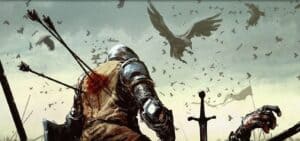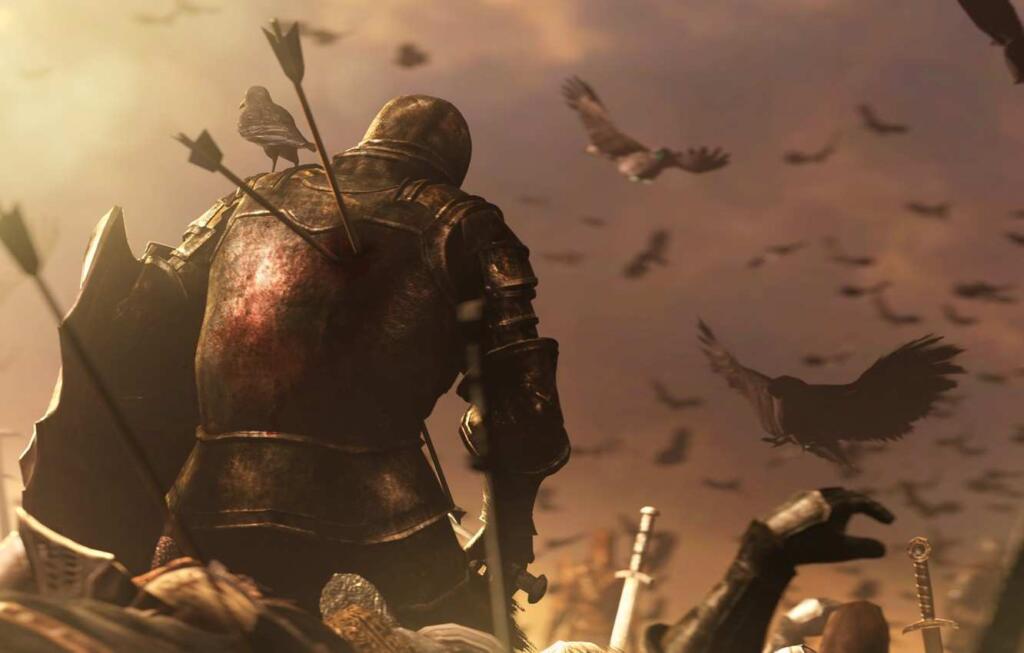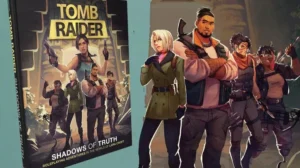
Death in RPG: A Narrative Guide
In role-playing games, as in real life, death is inevitable. However, this does not mean that it cannot be a powerful tool in building a story.
This guide explores how to approach character death in RPGs, allowing it to serve as both an emotional moment and a narrative thrust.
Acceptance and Grief
Firstly, it is vital to understand that each player will react to a character’s death differently. For some, the loss is personal and profound.
Therefore, allow players to express their feelings, be it sadness, anger or any other emotion.
Acknowledging these emotions makes the experience more authentic and helps with the grieving process.
Death as Part of the Narrative

Next, remember that death is not the end of the line; It’s just a new direction.
For example, in D&D 5ethe death of a paladin can incite companions to seek revenge against the villain responsible.
Em Pathfinder 2edeath can lead to epic quests into lower realms to rescue the soul of the deceased.
Is at The One Ring RPG, death can be a grim reminder of Sauron’s constant threat.
Alternatives to Permanent Death
Of course, not every death has to be permanent.
Many RPG systems, such as D&D 5eoffer resurrection rituals that can bring characters back to life.
No Pathfinder 2edivine favors or agreements with supernatural entities can be a way out.
However, these alternatives must be used with discernment, so as not to diminish the impact of death on the narrative.
Death Mechanics in Different RPG Systems
Character death is a reality in almost all RPG systems.
However, the way each system handles it can vary considerably.
Let’s explore the death mechanics in D&D 5e, Pathfinder 2e e The One Ring RPG.
Death in Dungeons & Dragons 5th Edition (D&D 5e)
Life Points (PV): When a character reaches 0 HP, he does not die immediately, but becomes unconscious.
Mortality Tests: From then on, at the beginning of each turn, the character must make a death test, rolling a d20. A result of 10 or more is considered a success, less than 10 is a failure.
Three successes stabilize the character; three failures result in his death.
Damage while Unconscious: If an unconscious character takes damage, they automatically suffer a death save failure.
If the damage is a critical hit, it counts as two fails.
Death in Pathfinder 2nd Edition
Hit Points and Agonizing State: When a character’s HP reaches 0, he falls unconscious and gains Agonizing 1 status.
If he is already in this state and reaches 0 HP again, the state increases by 1.
Recovery: Characters in the Dying state must roll a Fortitude save each turn.
Success stabilizes the character, while failure increases his Agonizing state.
Death: If a character reaches Dying 4, he dies.
If you are attacked while unconscious, you may also die if the damage exceeds your death threshold.
Morte em The One Ring RPG
Resistance Points (PR): When a character’s PR reaches 0, he falls unconscious, but does not die. He remains in this state until the end of the battle or until he receives help.
Wounds: Certain attacks can cause Wounds, and a character who suffers a Wound must make a test using their Armor.
If he fails, he receives a Serious Wound.
Death: If an already injured character receives a second wound, he falls and will die in moments if he does not receive a cure, if he receives the second wound and his resistance drops to zero, he dies instantly.
Each system brings different nuances to the near-death and character death experience.
It is vital for GMs and players to understand these rules to ensure a fair and exciting gaming experience.
Creating a New Character after a Death

The death of a character in a tabletop RPG can be an emotionally charged experience, but it can also open doors to a new journey.
Creating a new character is an opportunity for reinvention and exploring different aspects of the game and narrative.
Finding Inspiration
Look at the circumstances of your previous character’s death. Perhaps your new character has some kind of connection to the deceased, whether as a childhood friend, a distant relative, or even a rival.
This connection can provide a strong initial motivation and anchor point into the existing story.
On the other hand, you can opt for a complete restart, with no connections, exploring an entirely different aspect of the game world.
Experiment with Different Archetypes
If your previous character was a fearless warrior, you might want to explore the life of a studious wizard or a cunning rogue.
Vary not only the classes, but also the personalities.
Shy, bold, wise or impulsive characters can offer different forms of interaction and challenges.
Integrating into the Existing Narrative
Talk to the DM about the best way to introduce your new character.
Be rescued by the party in a dungeon, hired to help them on a quest, or have your own motives that coincide with the party’s goals.
A well-thought-out introduction can ease the transition and create immediate bonds with the other characters.
In conclusion, while a character’s death can be a sad moment, it can also be a door to new adventures and experiences.
Approaching the creation of a new character with an open mind and creativity can lead to an even more rewarding journey in the next stage of your tabletop RPG.
RPG Death: A Narrative Guide and How to Deal With It

Ultimately, communication is key.
GMs and players should talk openly and sincerely about death and its consequences in the game.
This way, everyone can ensure that the experience is enriching and not harmful.
Reminder: RPG is, above all, a collaborative and immersive experience. Death, when treated with empathy and care, can add depth and emotion to the narrative.
Play with an open heart and mind, and allow each moment, even the darkest ones, to enrich your shared story.
Source: https://www.caixinhaquantica.com.br/morte-em-rpg-um-guia-narrativo-e-como-lidar-com-isso/


